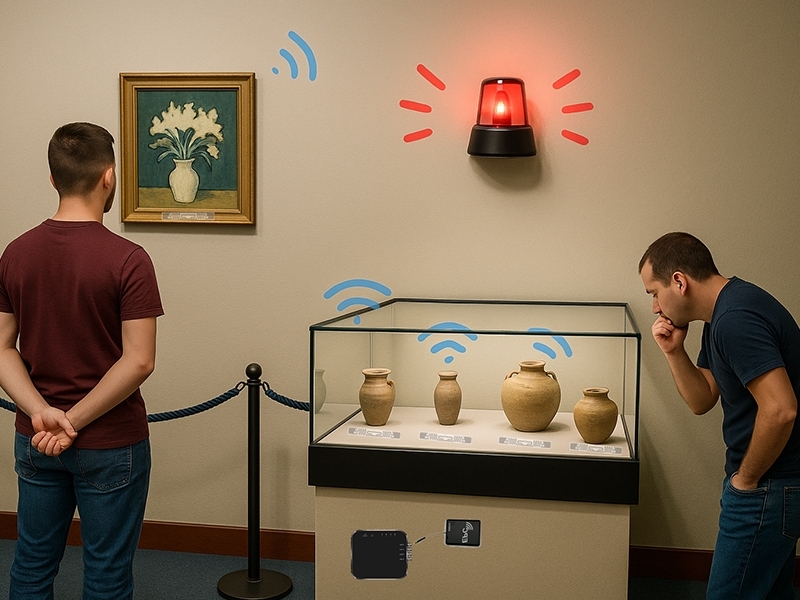Solution
RFID Culture and Art
-
RFID Culture and Art
✅ Enhanced inventory efficiency
✅ Real-time tracking and monitoring
✅ Strengthened security
✅ Data management automation
✅ Artwork protection
✅Examples National art museum
Managing the displaying, placement, and transportation of artworks within the museum. Managers can instantly know the location of each artwork and whether its movement has been authorized. With active RFID tags assigned to staff members, their working positions can be controlled, ensuring the safety of all collected artworks.
Exzmples: National Taiwan Museum of Fine Arts in Taichung, An Art Storage Company in Hong Kong.
Enhanced inventory efficiency:
RFID technology enables fast, non-contact inventory. Traditionally, artwork inventory required scanning barcodes or recording items manually—time-consuming and prone to human error. RFID allows simultaneous reading of multiple tags, significantly reducing inventory time and improving accuracy.
Real-time tracking and monitoring:
RFID tags provide real-time location information for artworks, allowing managers to track the movement of each piece at all times. This is especially critical during transportation, exhibition changes, or storage operations, helping to prevent loss or theft.
Strengthened security:
RFID technology can be integrated with anti-counterfeiting and tamper-proof mechanisms. Tags may be embedded in the artwork itself or its protective casing, and linked to alarm systems. If an artwork is moved without authorization or a tag is tampered with, the system immediately triggers an alert, effectively discouraging unlawful behavior.
Data management automation:
RFID system automatically collect and update artwork record such as check-in/out and exhibition history. This reduces manual data entry, ensures accuracy and integrity, and provides a reliable basis for tracing and managing artwork.
Artwork protection:
RFID tags can be read without directly touching the artwork, which is especially important for fragile or historic pieces, It can avoid avoiding damage from frequent handling or movement, and offering stronger protection for valuable collections.

- Headquarters:
- EPC Solutions Taiwan Inc.
- ADD.:3F, No. 49-3, Ln. 2, Sec. 2, Guangfu Rd., East Dist., Hsinchu City 300044, Taiwan (R.O.C.)(Durban Smart Building 1st Phase,Building C)
- TEL:+886-3-5786361
- FAX:+886-3-5771491
- E-mail:julia@epcsi.com.tw
- Hong Kong Branch:
- Sunbest Technology Company Ltd.
- ADD.:Unit B1, 3/F., Mai Shun Industrial Building, 18-24 Kwai Cheong Road, Kwai Chung, N.T., H.K.
- TEL:+852-27702330
- FAX:+852-23886226
- EMAIL:tammy@sunbesttech.com.hk
- Product
- semiconductor tag
- RFID Reader
- RFID Reader Module
- RFID Wristband
- RFID Keyfob
- RFID Tag
- RFID Lock
- RFID 134.2Khz
- RFID 2.45Ghz Product
- RFID Antenna
- Others
- Solution
- RFID Indoor Positioning
- Semiconductor Packaging Pick-and-Place Machine Mat
- RFID smart retail
- RFID production line profile
- RFID baggage management
- RFID product security
- RFID tire management
- RFID Smart Cloud Data Center
- RFID smart healthcare
- RFID intelligent storage terminal
- RFID surveillance System
- RFID Culture and Art
- RFID archives management
